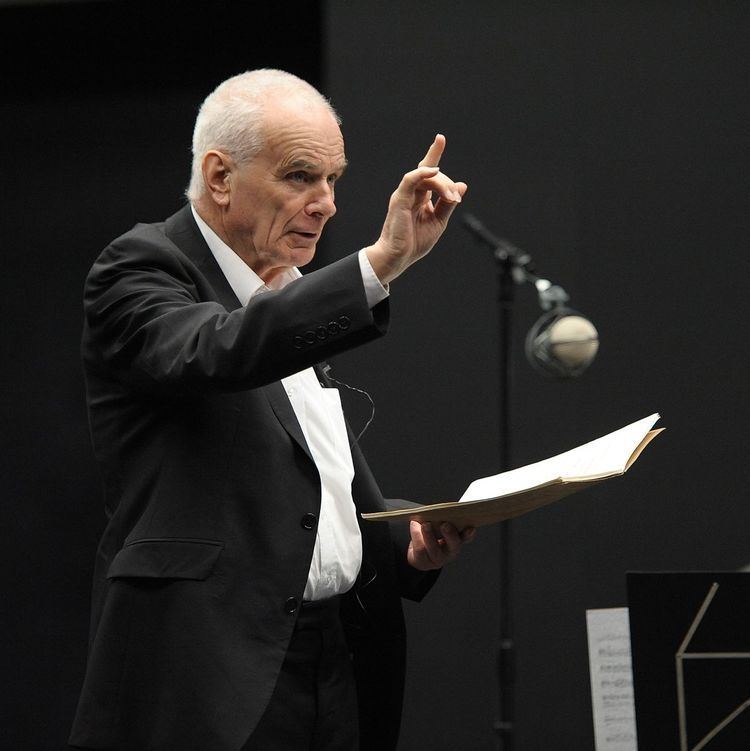Based on Chat Moss | Recorded 1995 (1995) (issued) | |
 | ||
Date 9 August 1994 (1994-08-09) Location Royal Albert Hall, London | ||
The Symphony No. 5 was composed by Peter Maxwell Davies in 1994 on commission from the Philharmonia Orchestra, who gave the world premiere under the composer’s direction at a BBC Promenade concert on 9 August 1994, at the Royal Albert Hall in London.
Contents
Character and materials
The form of the symphony (along with those of its predecessors) owes a great debt to the symphonies of Sibelius, in this case particularly the Seventh (Beecroft 1994, 2; Pruslin 1996). However, its sense of space, “less architectural than that of the previous symphonies, is a significant new departure, allowing a more relaxed attitude toward musical objects: closer to the Mahlerian aesthetic than at any time since the 1960s” (Beecroft 1994, 5). Davies has also cited the often canonic modal counterpoint of Sibelius's Sixth Symphony as an influence, and Sibelius's tone poem En saga has also been mentioned as a possible source of inspiration (Warnaby 1995, 34).
Instrumentation
The symphony is scored for 2 flutes (second doubling alto flute), piccolo, 2 oboes, cor anglais, 2 clarinets, bass clarinet, 2 bassoons, double bassoon, 4 horns, 3 trumpets, 3 trombones, tuba, timpani, percussion (marimba, glockenspiel, crotales, flexatone, 2 bass drums [small and large], cymbals, suspended cymbal, tambourine), celesta, harp, and strings.
Analysis
On the model of Sibelius’s Seventh, the symphony suggests the traditional four-movement form, but is cast in a single movement. It nevertheless forms an "archipelago of 34 sections of various length" (Beecroft 1994, 2). The Symphony is based on material from Davies's 1993 youth-orchestra composition Chat Moss, which in turn is derived from two plainchants, the Easter Gradual "Haec dies" and the Good Friday Tract "Domine audivi" from Habakkuk 3:3 (Davies 1995). It begins with an expansive adagio introduction, followed by music of great energy, characterised by an alternation of stable and unstable episodes (Warnaby 1995, 33). The overall tonality of D♭/C♯ with a G secondary pole is established at the outset in a woodwind trio, followed by undisguised modal melodies in the violins and flute. The succeeding faster music reaches a first climax in a Davies hallmark of ascending brass figures with powerful, sustained tritones in the horns that forecast a bigger climax to come, an affirmational brass theme at rehearsal Q2 which "seems to rise as if from the sea, magnifying the fragile flute melody heard at N2 into sudden immensity" (Beecroft 1994, 3).
